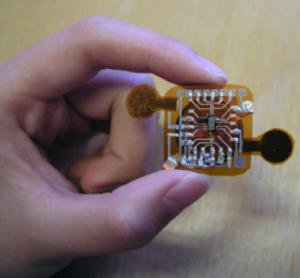
The future of health care could be found in a tiny, paper-thin skin patch that collects vital information. The Bio-patch sensor developed by researchers at Stockholm's KTH Royal Institute of Technology is inexpensive, versatile and, best of all, comfortable to wear.
 Geng Yang, a researcher at JRC iPack centre at KTH, says that the Bio-patch measures bioelectrical signals through the skin, gathering data on different parts of the body depending on where it is placed.
Geng Yang, a researcher at JRC iPack centre at KTH, says that the Bio-patch measures bioelectrical signals through the skin, gathering data on different parts of the body depending on where it is placed.
"On the chest it provides electrocardiography (ECG), on the skull it measures brainwaves (EEC), and on the forearm it can measure muscle response to stimulation from the nervous system (EMG)," he says. It also has a built-in sensor that constantly monitors body temperature.
With a wireless connection, the patient can analyse the readings in their smartphone, or send the data via internet to a healthcare professional for diagnosis.
The thinking behind Bio-patch is that health care can be moved out of the hospitals and into the home, Yang says. "Bio-patch is a step towards what is known as self-care, which is valuable especially for patients discharged after an operation, or for the elderly living unassisted," he says.
While the technology is versatile, interest has focused on the heart. "Heart diseases account for the majority of all deaths in the EU," he says.
Yang says Bio-patch can also aid detection of brain disease, by generating EMG data that helps physicians distinguish muscle changes from neurological problems.
A paper thin battery energy source in the Bio-patch helps make the patch comfortable and as small as possible, he says.
"Patient comfort will be an important success factor for the next generation of medical technology," Yang says. "All electronic components are mounted on a flexible foil, which makes it easy to attach to the skin and to wear comfortably," he says. Bio-patch is easy to attach to the skin and can be discarded after use.
Bio-patch has resulted in several publications in scientific journals and successful development of a prototype.

 Previous page
Previous page Back to top
Back to top







